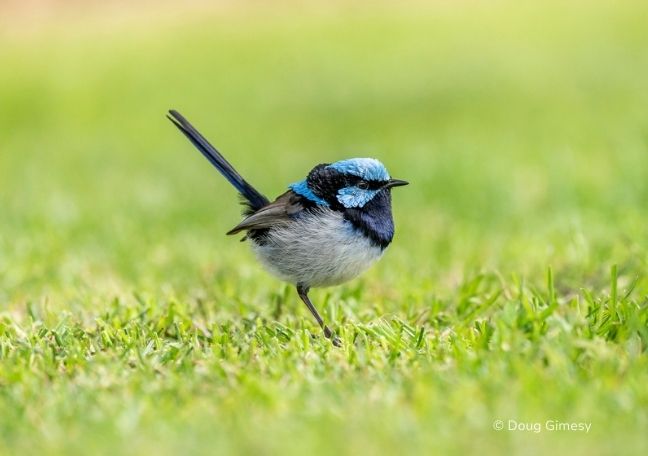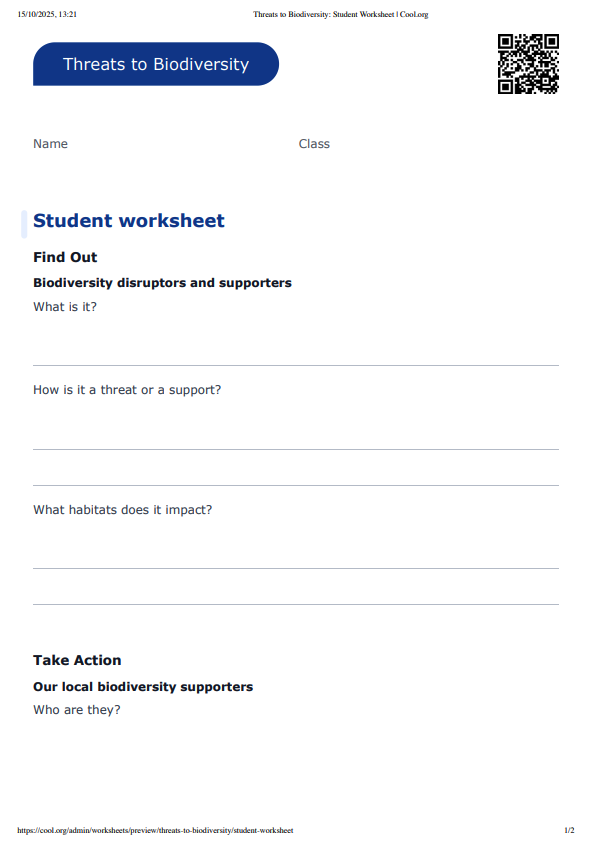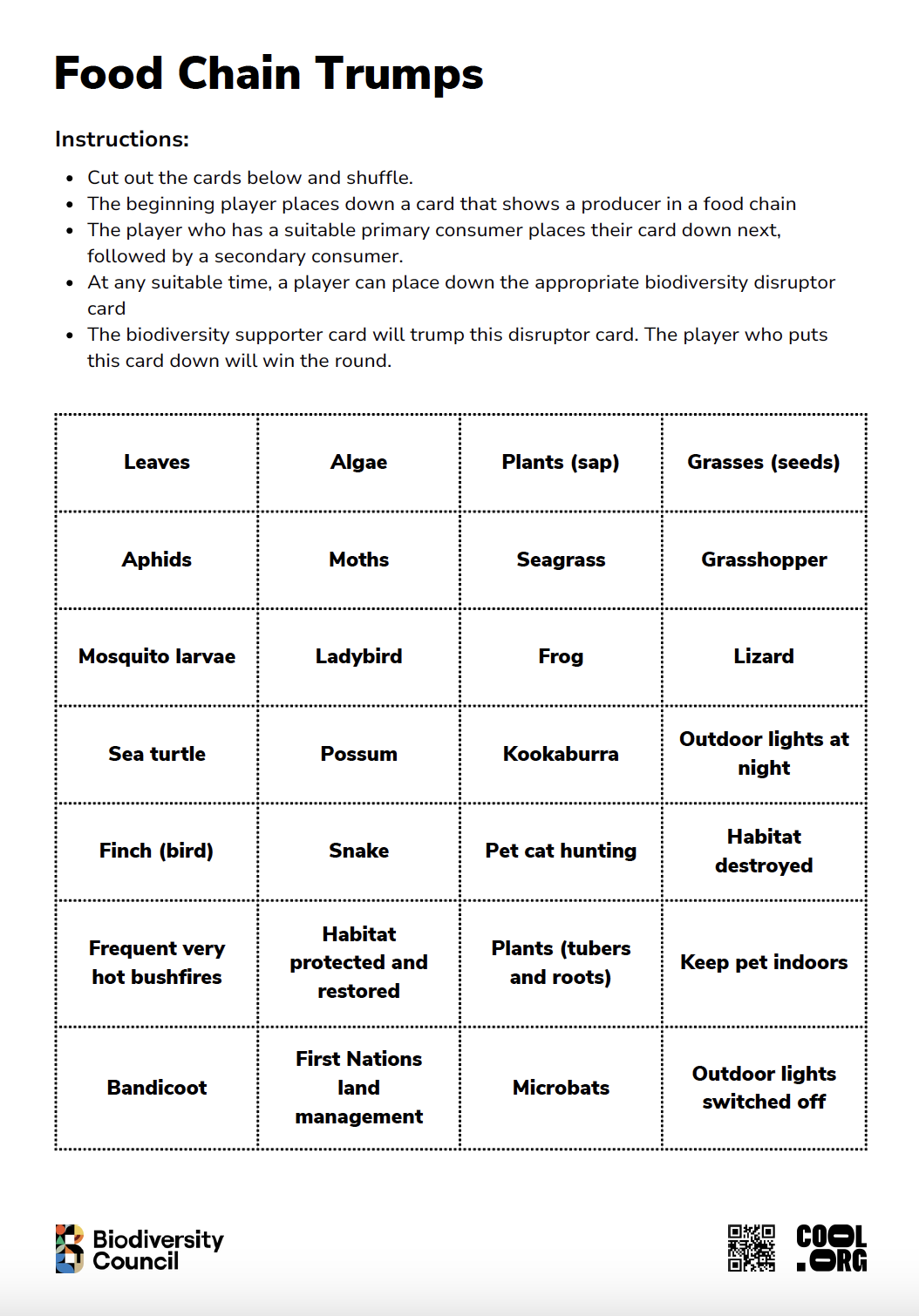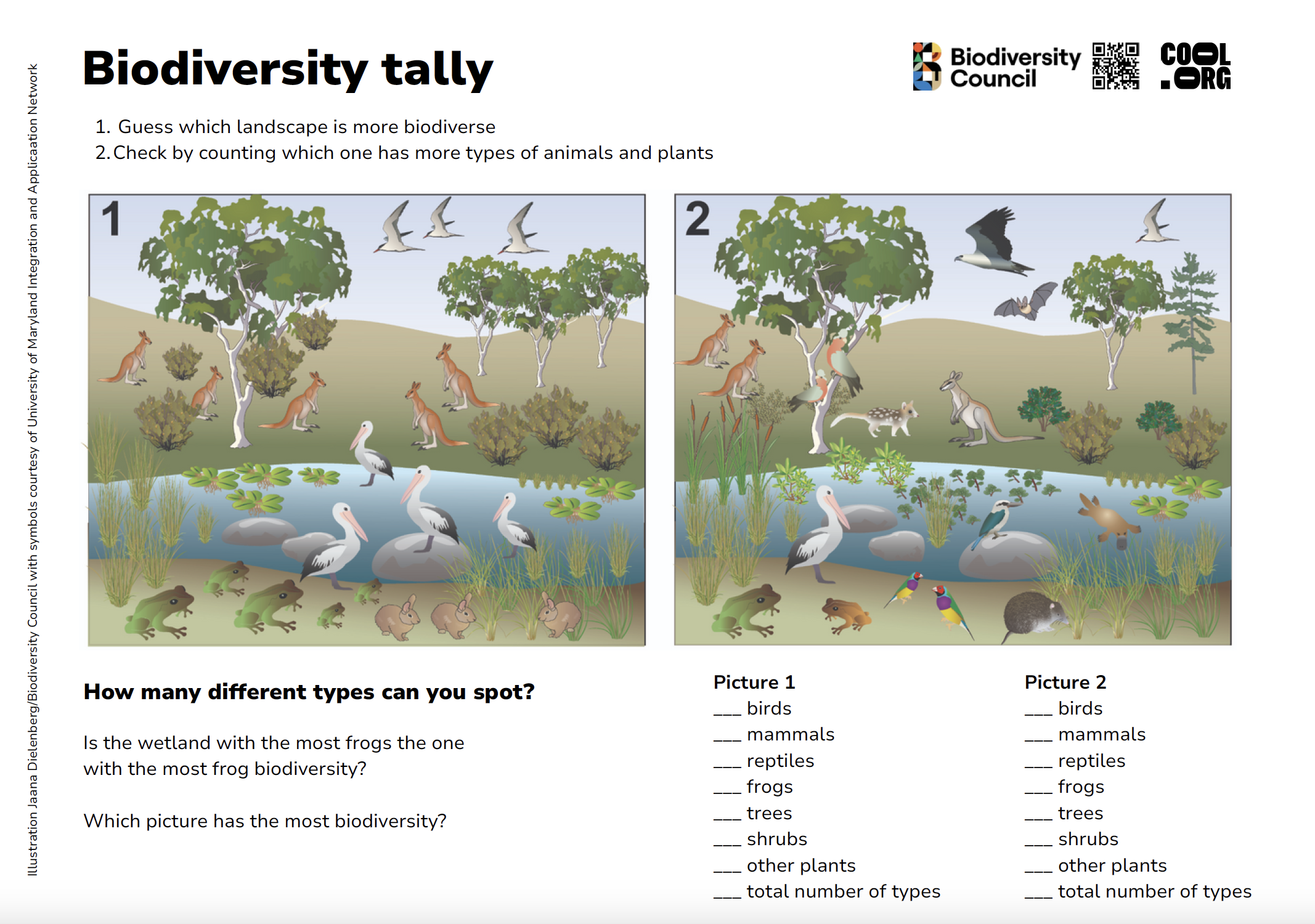Lesson summary
Students will identify how a habitat's biodiversity can be supported or disrupted by recognising key food chains within their local area, what can cause disruptions to them, and researching how specific groups or projects work to mitigate these disruptions.
Learning intentions:
Students will
- understand the concepts of biodiversity, life cycles and food chains
- examine disrupters and supporters of biodiversity.
Success criteria:
Students can
- demonstrate how different elements either support or put pressure on biodiversity
- identify a threat to biodiversity in their local area and investigate solutions.
Lesson guides and printables
Curriculum links
Select your curriculum from the options below.
Lesson details
Skills
This lesson is designed to build students’ competencies in the following skills:
- critical thinking
- collaboration
- community engagement
- cultural understanding
Curriculum Mapping
Australian Curriculum (v9.0) content description:
Year 3, Science
Students learn to:
- compare characteristics of living and non-living things and examine the differences between the life cycles of plants and animals (AC9S3U01).
Year 3, English
Students learn to:
- use interaction skills to contribute to conversations and discussions to share information and ideas (AC9E3LY02).
Year 4, Science
Students learn to:
- explain the roles and interactions of consumers, producers and decomposers within a habitat and how food chains represent feeding relationships (AC9S4U01).
Year 4, English
Students learn to:
- listen for key points and information to carry out tasks and contribute to discussions, acknowledging another opinion, linking a response to the topic, and sharing and extending ideas and information (AC9E4LY02).
Relevant parts of Year 3 Science achievement standards: Students classify and compare living and non-living things and different life cycles.
Relevant parts of Year 3 English achievement standards: Students relate ideas, express opinion, preferences and appreciation of texts, and include relevant details from learnt topics, topics of interest or texts.
Relevant parts of Year 4 Science achievement standards: Students identify the roles of organisms in a habitat and construct food chains.
Relevant parts of Year 4 English achievement standards: Students share and extend ideas, opinions and information with audiences, using relevant details from learnt topics, topics of interest or texts.
NSW Syllabus outcomes: Stage 2
A student:
- communicates with familiar audiences for social and learning purposes, by interacting, understanding and presenting (EN2-OLC-01)
- compares features and characteristics of living and non-living things (ST2-4LW-S).
General capabilities: Critical and Creative Thinking, Digital Literacy, Ethical Understanding
Cross-curriculum priority: Aboriginal and Torres Strait Islander Histories and Cultures, Sustainability
Level of teacher scaffolding: Low - support student research and teamwork
UN Sustainable Development Goals
UN SDG 11: Make cities and human settlements inclusive, safe, resilient and sustainable
- Target 11.4: Strengthen efforts to protect and safeguard the world’s cultural and natural heritage.
Resources Required
- Activity Sheet - Food Chain Trumps
- Activity Sheet - Biodiversity tally
- digital devices for research
- Resource sheet - card game, printed and cut out (1 per group of 5)
- Student Worksheet
Additional Info
This lesson was created in collaboration with The Biodiversity Council.
Special thanks to our content partner, The Conversation and to The Garry White Foundation, The Hugh D. T. Williamson Foundation, Wedgetail and The James Kirby Foundation for their generous financial support.
Related Professional Learning
What Makes a Species ‘Threatened’? Teaching Biodiversity and Species Protection
Quick summary: Learn about biodiversity and threatened species with Ecologist Thomas Nixon. You will learn what biodiversity is and how it is regulated in Australia, and you will look at some specific case studies that show what is being done across the country to protect our unique biodiversity.





Welcome back!
Don't have an account yet?
Log in with:
Create your free Cool.org account.
Many of our resources are free, with an option to upgrade to Cool+ for premium content.
Already have an account?
Sign up with:
By signing up you accept Cool.org's Terms and Conditions(Opens in new tab) and Privacy Policy(Opens in new tab).